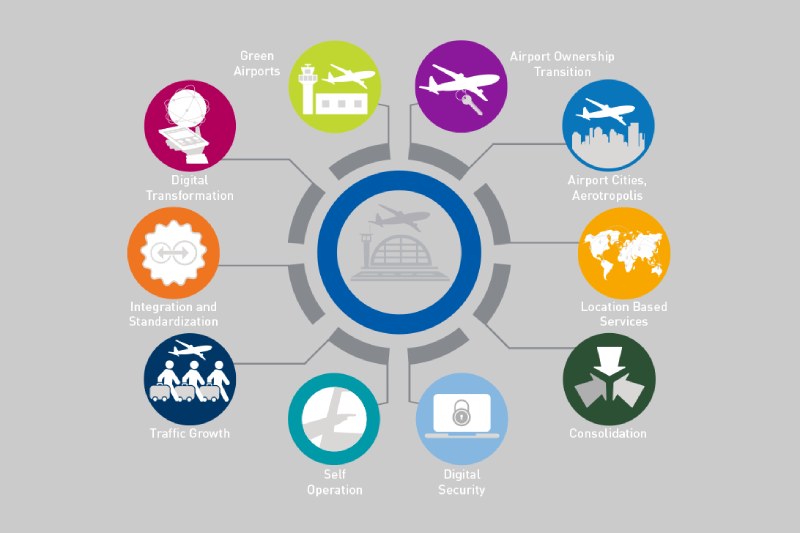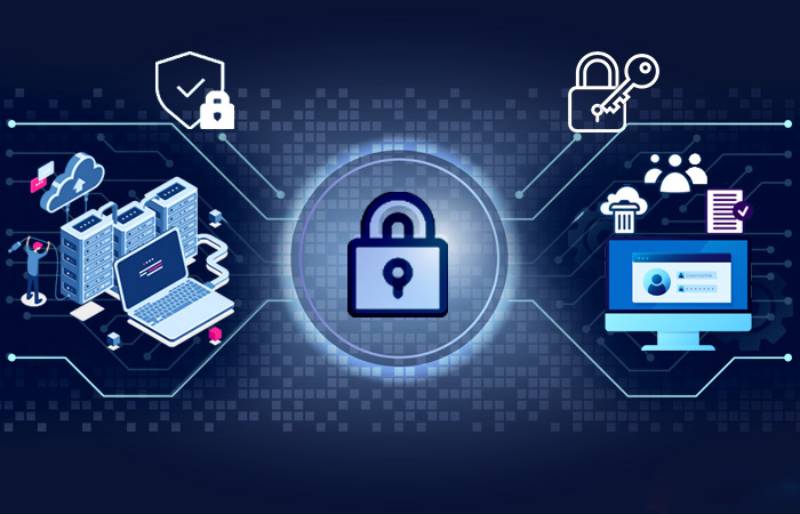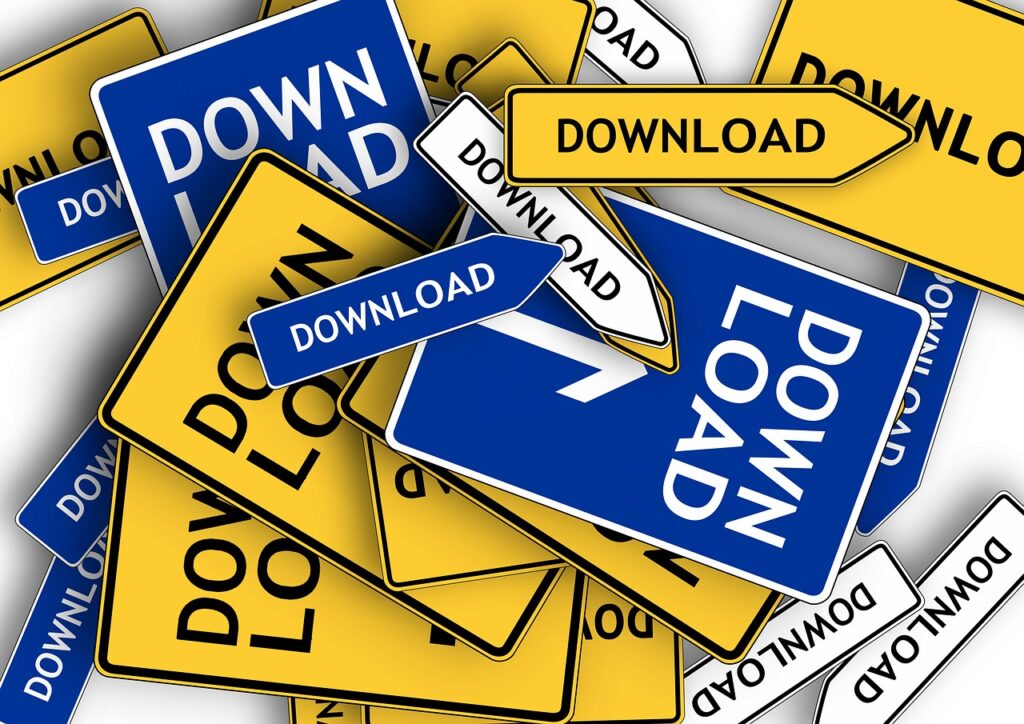Technology has been a significant contributor to the ongoing evolution of the aviation sector. The use of technology to improve security, effectiveness, and customer experience has made great strides in recent years. Additionally, the COVID-19 epidemic has sparked the creation of cutting-edge technologies that may influence how we travel. This post will examine the top rising technology trends in the aviation Industry sector. Start now!
Table of Contents
1. Autonomous Aircraft
Autonomous Aircraft, commonly called uncrewed aerial vehicles (UAVs) or drones, can potentially revolutionize the aviation sector. Aircraft have the potential to boost safety, decrease operational costs, and reduce the danger of human mistakes by being able to fly without a pilot. Significant aviation corporations like Boeing and Airbus are investing in autonomous aircraft technology.
2. Internet of Things (IoT)
A network of devices connected to the internet and with communication capabilities is known as the Internet of Things (IoT). IoT technology can be utilized in aviation to track luggage, track equipment performance, and enhance aircraft maintenance. For instance, sensors installed on aircraft engines can identify possible issues and notify maintenance teams before a failure.
3. Artificial Intelligence (AI)
The aviation sector could be transformed entirely by artificial intelligence (AI). AI has the potential to raise flight safety, maximize aircraft maintenance, and improve customer service. AI-enabled chatbots, for instance, can offer passengers individualized support, while AI algorithms can assist airlines in streamlining flight schedules to cut down on delays and boost productivity.
4. Augmented Reality (AR)
Augmented reality (AR) technology can improve the consumer experience by giving them access to real-time information like flight status, travel instructions, and airport attractions. Pilots can practice procedures in a virtual setting before putting them into effect in actual conditions by using augmented reality (AR) for training and simulation.
5. Blockchain
The security and effectiveness of transactions in the aviation sector can be enhanced by blockchain technology. Blockchain, for instance, can safely store passenger information and flight details, enabling quicker and more precise processing of boarding tickets and baggage handling.
6. 3D Printing
The time and cost of maintenance can be decrease by using 3D printing technology to make airplane spare parts and components. This technology can also be use to build models and prototypes, enabling designers to test out new concepts and enhance the performance of their Aircraft.
7. Electric and Hybrid Aircraft
To lessen its carbon impact, the aviation sector is seeing an increase in electric and hybrid aircraft use. Electric motors on these airplanes cut down on pollutants and noise pollution. Leading industry giants like Boeing and Airbus are investing in creating electric and hybrid Aircraft.
8. Biometrics
Airport security may be enhance, and the boarding procedure can be made more efficient with the help of biometric technology like facial recognition and fingerprint scanning. Payments and access control are other applications for biometric authentication.
9. Virtual and Augmented Reality Training
Virtual and augmented reality can be apply to pilot simulation and training. Pilots can rehearse emergency procedures and other scenarios using these technologies in a secure virtual setting.
10. Contactless Technology
The COVID-19 epidemic has driven contactless technology adoption in the aviation sector. Contactless technology can lower the risk of infection by minimizing the necessity for direct physical touch between travellers and airport workers. For instance, without interacting with airport workers, travelers can check in and drop off their bags using contactless check-in kiosks and bag drops.
11. Predictive Maintenance
Predictive maintenance uses data analysis and machine learning algorithms to detect equipment breakdowns before they happen. The aviation sector can adopt this technology to enhance aircraft maintenance and decrease downtime. Predictive maintenance systems can identify possible issues and notify service teams by evaluating data from sensors and other sources before a breakdown.
12. In-Flight Connectivity
Passengers may use Wi-Fi and other online services in the air thanks to in-flight connection, which keeps them connected. This technology can increase productivity and improve the customer experience for business travelers. Real-time updates on the weather, flight status, and other crucial information can also be provided through in-flight Connectivity.
13. Cloud Computing
The availability of real-time data and analysis made possible by cloud computing can increase the effectiveness of airline operations. Scheduling crews, among other operational activities, can be done via cloud-based solutions. Cloud computing can enhance cooperation and decision-making throughout the airline sector by allowing access to data from any location.
14. Advanced Materials
To increase performance and decrease weight, advanced materials like composites and ceramics are being utilize in the design of airplanes. These materials provide advantages like better durability, higher fuel efficiency, and lower maintenance costs. As technology develops, new materials are expected to be created for use in aircraft design.
15. Next-Generation Air Traffic Control
New air traffic control (ATC) systems are being created to increase the effectiveness and safety of air travel. These systems improve air traffic management through advanced data analysis and communication technologies. The capacity of the airspace system can be increase while delays are decrease, thanks to next-generation ATC technologies.
Conclusion
Technology is becoming a more significant factor in the ongoing growth of the aviation sector. IoT, AI, AR, blockchain, 3D printing, electric and hybrid aircraft, biometrics, augmented and virtual reality training, contactless technology, predictive maintenance, in-flight Connectivity, cloud computing, advanced materials, and next-generation air traffic control are some of the top emerging technology trends in the aviation sector. These technologies can revolutionize the market by improving customer satisfaction, safety, and efficiency while lowering environmental impact.
FAQs
What is the aviation industry?
Airlines, airports, and aerospace manufacturers are just a few examples of the businesses and institutions that make up the aviation sector.
How is technology transforming the aviation industry?
The aviation sector is undergoing a technological revolution due to increased consumer satisfaction, operational effectiveness, and safety.
Also read: Touch Screen Kiosk
Also read: Toxic Links
- What are Sitewide Backlinks & Their Impact on Search Engine Ranking - May 22, 2024
- 10 Tips For How To Use Craigslist to Buy - May 5, 2024
- Best 5 ways to how to get play store back on my smartphone? - May 3, 2024



